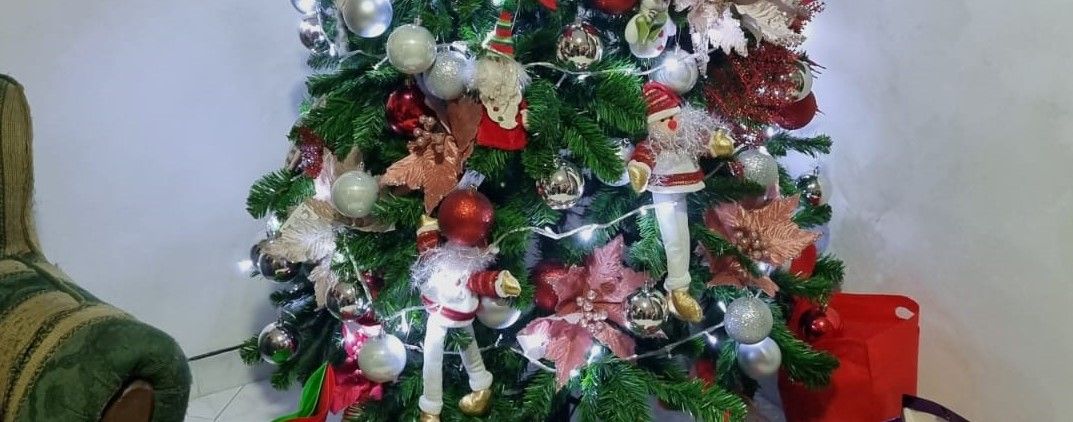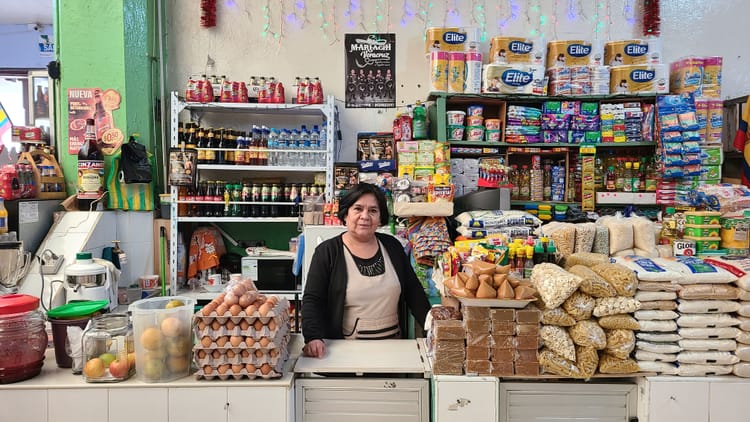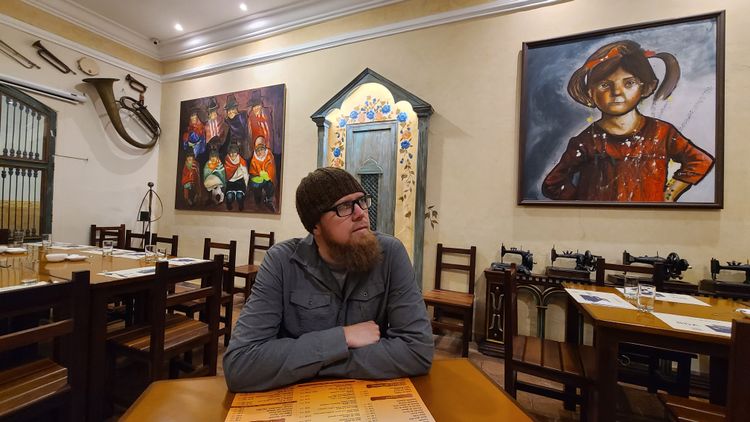Learning about Santa (and myself)

...continued from part 1.
I realized during the midnight gift exchange, that the kids weren’t in bed waiting for Santa to come bring presents, nor were there any gifts from Santa under the tree.
A friend explained that everyone, including kids, will stay up to midnight Christmas eve to exchange gifts. If it is a gift that could help entertain a child ‘til midnight, they may be allowed to open it early. The gifts are from family, parents – and *maybe* baby Jesus. All in all, it seems kids in Colombia are taught that Santa is a story, a myth.
As a kid, I believed in Santa. He was even known for his environmentally friendly practice of reusing wrapping materials for our household. That was until one year I couldn’t sleep and went into my parents’ room without knocking one late Christmas eve and saw them wrapping presents that later showed up under the tree from Santa. (I don’t recall “the conversation” about Santa or how I felt about it, so perhaps that went well enough.)


Surprised
I was ready for the fireworks and the party that is Christmas eve here, but kids not believing in Santa caught me off guard. I just hadn’t thought about it. Growing up in the US and now a connoisseur of Christmas movies, I had assumed that if people are celebrating Christmas including with images of Santa (which are all around Medellín), then what Santa means to me was the same for others.
Media & movies help build this image of what is "normal." If I were a Colombian kid watching popular US-made Christmas movies, it might be a relief to hear Santa is just a story. In far too many movies, there’s a video montage at the end of Santa traveling around the world, while the other 99% of the movie features white, middle-class kids from the US suburbs. Thankfully some Christmas movies are diversifying their stories these days, but I don’t think we’ve reached anywhere near representative of the population. As someone who was a white, middle-class kid in the suburbs, it makes even more sense that this cultural difference snuck up on me.
In retrospect, if I had thought about it, I probably would have told you, “Of course belief in Santa varies! Of course, belief varies by culture, norms, and family peculiarities!” But that doesn't change the jolt of surprise when my assumption was dashed.
Getting Curious
Now fascinated by this difference, I keep asking people about Santa and did a little poking around the internet:
- People I’ve talked to here are mostly Catholic and mention that kids are taught Santa is a myth, in part, as a comparison to Jesus being real. While various Catholic forums and websites debate what should be taught, a 2013 Pew survey identified that, growing up, 81% of white Catholics vs 68% of Hispanic Catholics pretended Santa Claus would visit.
- Baby Jesus delivers presents. This blog covers it.
- My hairdresser categorizes belief in Santa as being “too innocent.” She told me children need to know some of the realities of the world to keep themselves safe.
- A marching band in Medellín's Myths and Legends Parade wore Santa hats and played Christmas songs.
- Breaking the news to kids who believe in Santa can be tough. A friend in the US shared the idea with me of kids “becoming” Santa. Talk about going viral! This was posted on FB with 17,000 shares and even covered by the Washington Post. Eventually the original author was identified. Here's her post.
Now What?
Differences noted, I will likely continue on with my Christmas traditions next year, including binging Christmas movies and shows. I'm always on the look out for ones telling new stories or old stories in interesting ways - including about other December holidays (Kwanza anyone?). Got suggestions? Send them my way!
Ho. Ho. Ho.
-
Written Jan 10, 2023; Edited & posted Feb 15, 2023.






Member discussion